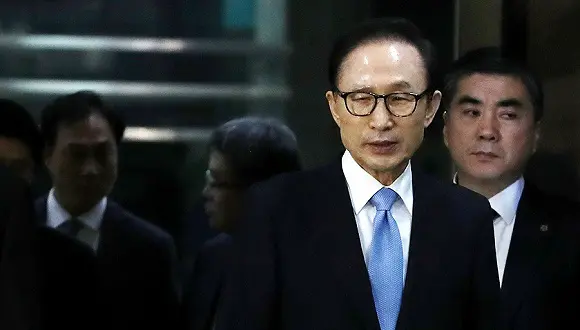Japan's Ministry of Education, Culture, Sports, Science and Technology announced Tuesday that a senior official in charge of the controversial construction of a new national stadium for the Tokyo 2020 Olympics will step down, as public condemnation grows following the government flip- flopping on the stadium's design plans.
Kimito Kubo, 58, chief of the Sports and Youth Bureau at the education and sports ministry and a key figure involved in the construction of the new stadium will step down early next month, the ministry said, with the decision being approved at a Cabinet meeting Tuesday.
Spiraling costs of building the new national stadium for the 2020 Tokyo Olympics and Paralympics has caused public outrage and triggered political debate about revising the government's initial plan to use a futuristic design by Iraqi-British architect Zaha Hadid, considered a key element of Japan securing its bid to host the Games.
But following slumping support for Prime Minister Shinzo Abe and his administration, following the Liberal Democratic Party-led coalition's steamrolling of unconstitutional and publicly- denounced security legislation through the lower house of parliament recently, Abe, eyeing restoring public support, scrapped the construction plans, ordering them to be revised from scratch.
Hadid's design ballooned to an estimated 252 billion yen (2 billion U.S. dollars), almost double the original estimate, with construction firms stating that the completion of the ambitious centerpiece for the Games would likely not be finished on time, or for the rugby World Cup a year earlier, also taking part in Japan.
While education and sports minister Hakubun Shimomura equivocally told a news conference Tuesday that Kubo quitting was part of a regular reshuffling of personnel by the government, but was also his own choice to "humbly accept criticism," those close to the matter said he was ousted as a scapegoat to account for the ongoing stadium debacle, to appease a public staunchly opposed to the Games' ballooning costs, yet also dubious about governmental flip-flops.
The education and sports ministry confirmed that Michiyasu Takahashi, 54, currently the director for the Office for the Counsel for the Implementation of Education Rebuilding at the Cabinet Secretariat, will be appointed the new Sports and Youth Bureau director general, to replace Kubo.
The government's U-turn on the stadium design follow Abe recently stating in a parliamentary session that if the designs are changed at this point, the likelihood would increase that the stadium would not be completed in time for the 2020 Olympics, and, adding to the controversy and ambiguity over Kubo's hasty resignation, renowned Japanese architect Tadao Ando, in charge of the committee who originally selected Hadid's design, has stated he has "no idea" why the costs had "skyrocketed" so much.
He warned against the government revising the design, which he believed secured Tokyo the original bid, or extending the construction time frame, and along with government officials from both ruling and opposition parties voiced concern about Abe scrapping the plans as both public and international faith in Tokyo's ability to host the Games could be diminished.
As the stadium debacle continues, the 2020 Olympics also hit the headlines recently following the unveiling of the Games' new emblem.
Described by some as a "geometrical atrocity" and by others as a "masterpiece of minimalism," the new emblem, which features a large letter T, with upended quotation marks, is supposed to represent "equality" and the "power of every beating heart," according to the organizing committee.
Some here are praising Japanese artist Kenjiro Sato who designed the emblem -- the "heart" of which is also the Japanese flag -- while others say it lacks the fundamental essence captured in emblems used at the Sydney Olympics 2000, Athens in 2004 and Beijing in 2008.
"London's emblem in 2012 was also painful to look at, but the Tokyo 2020 logo is also an eyesore," said Yojiro Kayashi, 32, an art director at Tokyo's biggest advertising agency. "If one of my junior designers submitted something like this to me, I'd seriously considering firing them on the spot," he said.
Similarly, Keita Sato, 43, an independent copywriter, said he'd seen better designs. "Athens in 2004 really reflected the history and global connectivity of the Games, it really captured the essential spirit of what the Olympics is all about."
"But the new emblem for Tokyo doesn't really say anything. Beijing's logo in 2008 reflected both an Asian and sporty aesthetic in a design that looked like a wooden stamp as we use in this part of the world, and Sydney 2000 reflected the country's unique heritage by incorporating a boomerang into the design," said Sato, adding that the Tokyo 2020 logo lacked impact, and was overly similar to the J. League soccer logo.
But some fans of the new design begged to differ, with Minoru Yoshida, 53, a fine art teacher at a prestigious university in the capital saying that "less is more."
"I think people are trying to over-interpret the emblem and it shouldn't be viewed in comparison to past logos, as each Games represents a new era and hence a new aesthetic. Japanese art and cultural practices are traditionally very minimalistic, where less is considered more, such as the tea ceremony and ikebana (flower arranging)."
"While to the untrained eye a single stem backed by some leaves and a floret in a pottery vase may seem dull and featureless, to the artisan it is beauty behind comprehension; inspired mastery," Yoshida said.
Others refused to be drawn into the debate. "There's no point arguing for or against the design, as it will probably be scrapped anyway, just like the stadium design," quipped Shota Miyamura, 28, a construction worker. "So, who cares?" Enditem
 简体中文
简体中文

